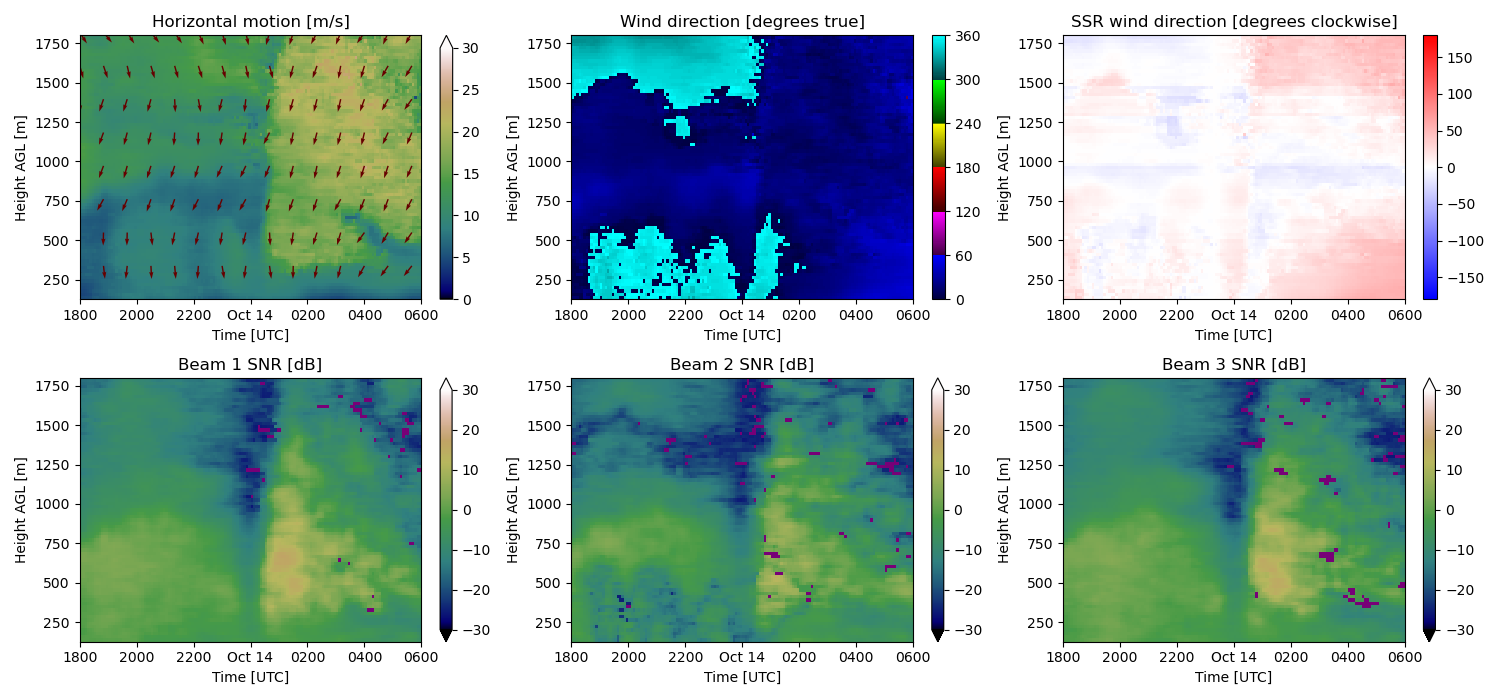|
Currently provided on two of the MAPNet vehicles, the Radiometrics XBS-BL 915 MHz Radar Wind Profiler (RWP) has the ability to retrieve high-resolution wind profiles from the surface to 5 km above ground level. These RWPs sample along seven beams (six beams with a zenith angle of 23.5 degrees off vertical and equally spaced azimuth angles of 60 degrees, and one vertically pointing beam). Averaged data is adjustable but is often operated at 5 minute and 60-minute intervals. By adjusting the coherent averaging over a 30-60-minute period, the maximum height of good winds is increased by 30-100%. Independent beam moments (SNR, velocity, power returned, and spectrum width) is also recorded. These profilers have optional clutter panels that can be installed to reduce ground clutter contamination. Radar Wind Profilers work by transmitting electromagnetic radiation in either vertical or off-vertical directions. The signal is then backscattered to the radar (most effectively from turbulent entities due to Bragg scattering). The power returned often is Doppler shifted due to the motions of the scatters. These Doppler shifts are then processed to into Doppler spectral moments (signal power, radial velocity, and spectrum width). After processing and averaging the spectra for each sampling height, the processor is able to build a wind profile. Generally in clear air, the height to which wind profiles are obtained is dependent on the both the turbulent kinetic energy and the variability of refractive index, which are in turn dependent on the depth and concentration of water vapor, atmospheric stability, and various turbulent mixing processes. The 915 MHz RWP also operates in the Rayleigh scattering regime which in turn can also improve the maximum height of good winds light to moderate precipitation is overhead. Recent observations have also shown that biological flyers (birds, bugs, and other various insects) can be detected. Figure 2 shows an example of possible migrating biological flyers that were detected during the cool months. Therefore, this platform can be used for not only meteorological detection, but also biological detection. 
The MIPS 915 MHz Wind Profiler |

Fig 1. Profiler capturing a low-level jet overnight. After daybreak, a front passes over the instrument as shown by the sharp change in wind direction. 
Fig 2. Data taken from the MIPS 915 MHz RWP on 14 Oct 2020. The Higher values of beams 1 - 3 SNR just after sunset (~0200 UTC) is due to apparent migrating birds that can be detected from the 915 RWP. 
Fig 3. Typical hurricane log wind profile derived by the RaDAPS 915 while deployed for Hurricane Ida (2021). |
×

